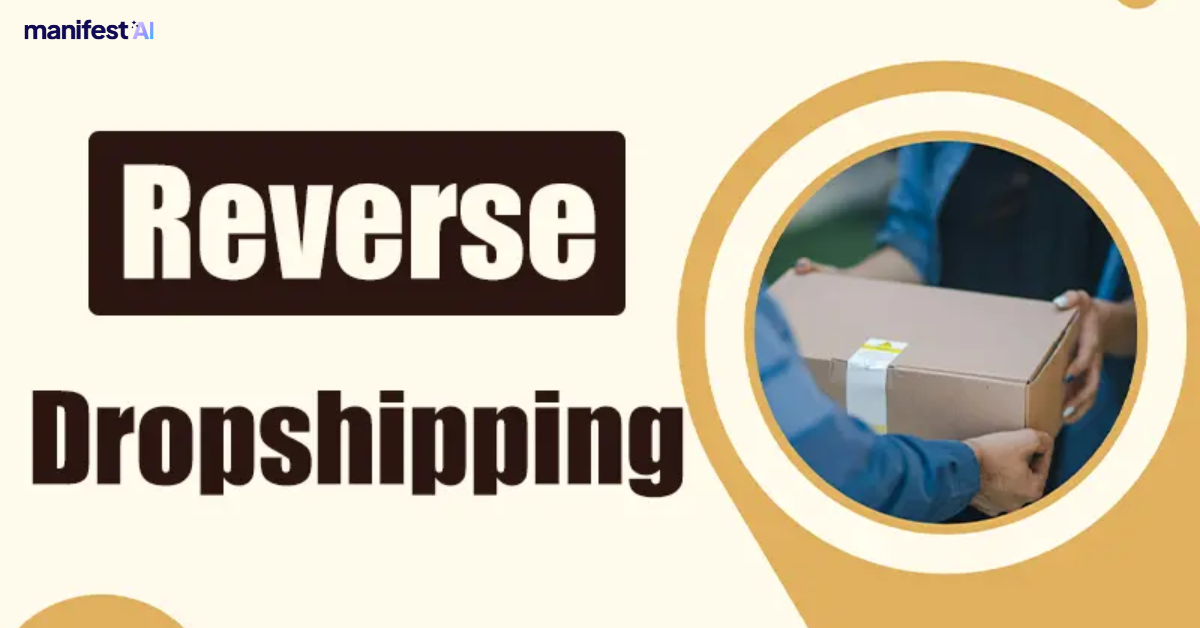What is Reverse Dropshipping & How to Start in 2024

Reverse dropshipping is a business model where high-quality or luxury goods are sourced from developed countries and sold to consumers in emerging markets. This approach contrasts with traditional dropshipping, which typically involves selling inexpensive products from countries like China to developed markets. As emerging markets experience growing middle-class populations and increasing demand for premium products, reverse dropshipping offers a unique opportunity for sellers to capitalize on these trends.
This guide will explore what reverse dropshipping is, how it compares to traditional dropshipping, and provide a detailed roadmap for starting a reverse dropshipping business
What is Reverse Dropshipping?

Reverse dropshipping is a retail model where high-quality or luxury goods are sold from developed countries to consumers in emerging markets. Unlike traditional dropshipping, where inexpensive products are sourced from countries like China and sold in developed markets, reverse dropshipping involves sourcing premium products from countries like the United States, Canada, or Europe and selling them in countries with growing middle-class populations, such as China, India, or Brazil.
In this model, sellers don’t hold inventory. Instead, when a customer places an order, the seller purchases the product from a supplier in a developed country and has it shipped directly to the customer in the emerging market. This approach capitalizes on the demand for high-quality, authentic goods that may be hard to find or more expensive locally.
Reverse Dropshipping vs Dropshipping
|
Aspect |
Reverse Dropshipping |
Dropshipping |
|
Target Markets |
Emerging markets with growing middle-class populations |
Developed markets like the U.S., Europe, and Australia |
|
Product Quality |
High-quality, luxury, or niche products |
Inexpensive, mass-produced items |
|
Customer Base |
Consumers willing to pay more for quality and exclusivity |
Price-sensitive consumers looking for bargains |
|
Shipping |
From developed countries (e.g., U.S., Europe) to emerging markets (e.g., China, India) |
From emerging markets (e.g., China) to developed countries |
|
Competitive Landscape |
Less competitive due to fewer businesses in the market |
Highly competitive with many businesses involved |
|
Profit Margins |
Generally higher due to premium product pricing |
Typically lower due to lower-priced products |
|
Challenges |
Complex logistics, higher initial investment |
Managing quality and customer satisfaction |
|
Opportunities |
Tap into growing demand for premium products in new markets |
Wide range of products and suppliers available |
Target Markets
- Traditional Dropshipping: Focuses on selling low-cost products from emerging markets to consumers in developed countries.
- Reverse Dropshipping: Involves selling premium products from developed countries to consumers in emerging markets.
Product Quality
- Traditional Dropshipping: Typically deals with cheaper, mass-produced items.
- Reverse Dropshipping: Focuses on high-quality, often luxury or niche products.
Customer Base
- Traditional Dropshipping: Targets price-sensitive consumers looking for bargains.
- Reverse Dropshipping: Targets consumers willing to pay more for quality, authenticity, and exclusivity.
Shipping Considerations
- Traditional Dropshipping: Products are shipped from countries like China to customers in the U.S., Europe, etc.
- Reverse Dropshipping: Products are shipped from the U.S., Europe, etc., to customers in countries like China, India, and Brazil.
How To Start Reverse Dropshipping

- Market Research:
- Identify emerging markets with a growing demand for high-quality or luxury products. Look into countries with increasing middle-class populations and disposable incomes.
- Research the types of products that are in demand but not readily available or are more expensive locally.
- Select a Niche:
- Choose a specific niche based on your market research. This could be electronics, fashion, beauty products, health supplements, or home decor.
- Ensure the niche has a consistent demand and the products are of high quality.
- Find Reliable Suppliers:
- Look for suppliers in developed countries who can provide authentic, high-quality products. Websites like Alibaba, AliExpress, or even direct partnerships with brands can be useful.
- Verify the suppliers’ credibility by checking reviews, asking for samples, and ensuring they have a reliable shipping process.
- Set Up an Online Store:
- Use platforms like Shopify, WooCommerce, or BigCommerce to create your online store. Make sure the store is user-friendly and visually appealing.
- Optimize your store for international customers, including multiple language options and currency converters.
- Set Up Payment and Shipping:
- Choose payment gateways that support international transactions, such as PayPal, Stripe, or local options popular in your target market.
- Partner with reliable shipping companies that offer international shipping and can handle customs and import duties.
- Marketing Your Store:
- Use social media marketing, SEO, and pay-per-click advertising to reach your target audience. Focus on platforms popular in your target markets.
- Collaborate with local influencers or bloggers to build trust and credibility.
- Customer Service:
- Provide excellent customer service by being responsive and addressing customer queries and issues promptly.
- Offer after-sales support and easy return policies to build customer loyalty.
Pros and Cons of Reverse Dropshipping
Pros:
- Higher Profit Margins: Selling high-quality or luxury products can result in higher profit margins compared to traditional dropshipping.
- Less Competition: Reverse dropshipping is still relatively new, so there is less competition in the market.
- Growing Markets: Emerging markets with increasing middle-class populations present a significant opportunity for growth.
Cons:
- Complex Logistics: Managing international shipping, customs, and import duties can be complicated.
- Higher Initial Investment: Sourcing high-quality products and setting up an online store with international capabilities may require a higher initial investment.
- Market Risks: Economic fluctuations and political instability in emerging markets can impact your business.
Products You Can Sell With Reverse Dropshipping

Here is the list of products you sell with reverse dropshipping:
Electronics
- High-end gadgets, smart home devices, and premium audio equipment are in demand in many emerging markets.
- Ensure these products come with international warranties and support.
Fashion and Accessories
- Branded clothing, designer handbags, and luxury watches are popular among middle-class consumers in emerging markets.
- Focus on authenticity and provide certificates of authenticity where applicable.
Beauty and Health Products
- High-quality skincare products, premium makeup brands, and health supplements are sought after.
- Partner with well-known brands to ensure product credibility.
Home Decor
- High-end furniture, unique home decor items, and premium kitchen appliances can attract affluent consumers.
- Highlight the quality and craftsmanship of these products.
Fitness and Wellness
- Premium fitness equipment, organic health supplements, and wellness gadgets can find a strong market.
- Provide detailed information on product benefits and usage.
Conclusion
Reverse dropshipping offers a unique opportunity to cater to the growing demand for high-quality products in emerging markets. By understanding the differences between traditional dropshipping and reverse dropshipping, conducting thorough market research, and carefully selecting products and suppliers, you can tap into this lucrative business model.
While there are challenges such as complex logistics and higher initial investments, the potential for high profit margins and market growth makes reverse dropshipping a promising venture for 2024 and beyond.

.png)
